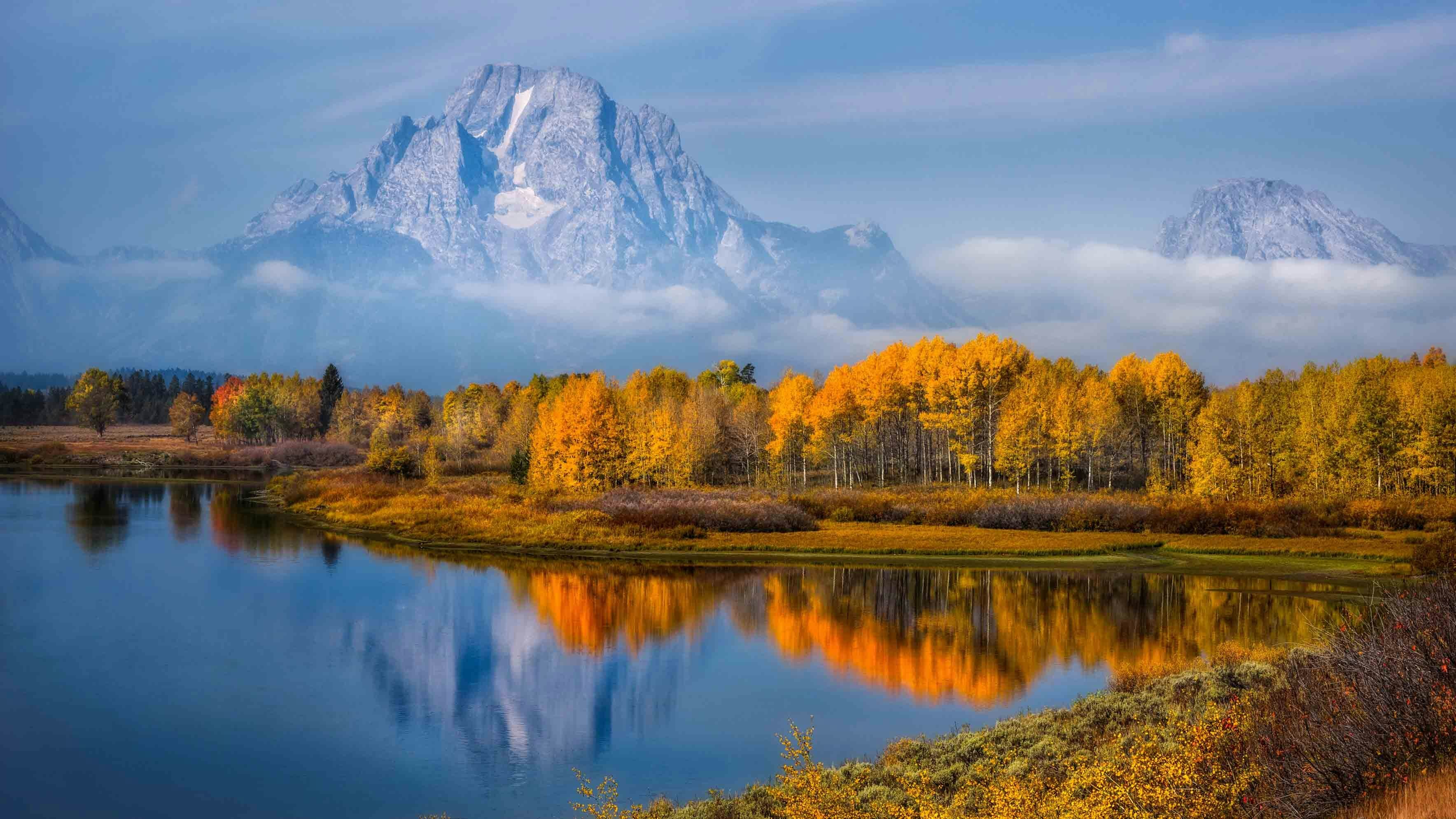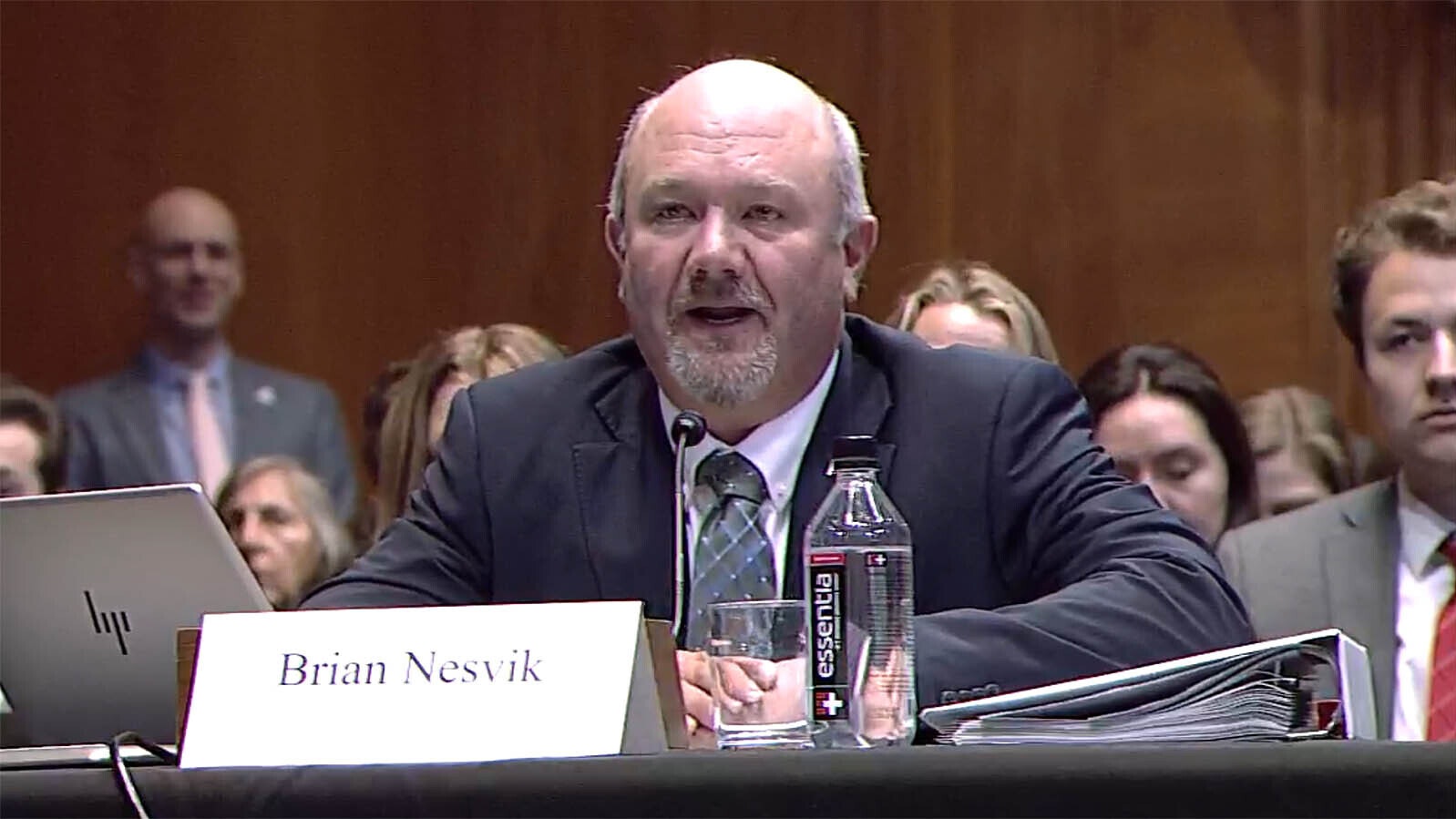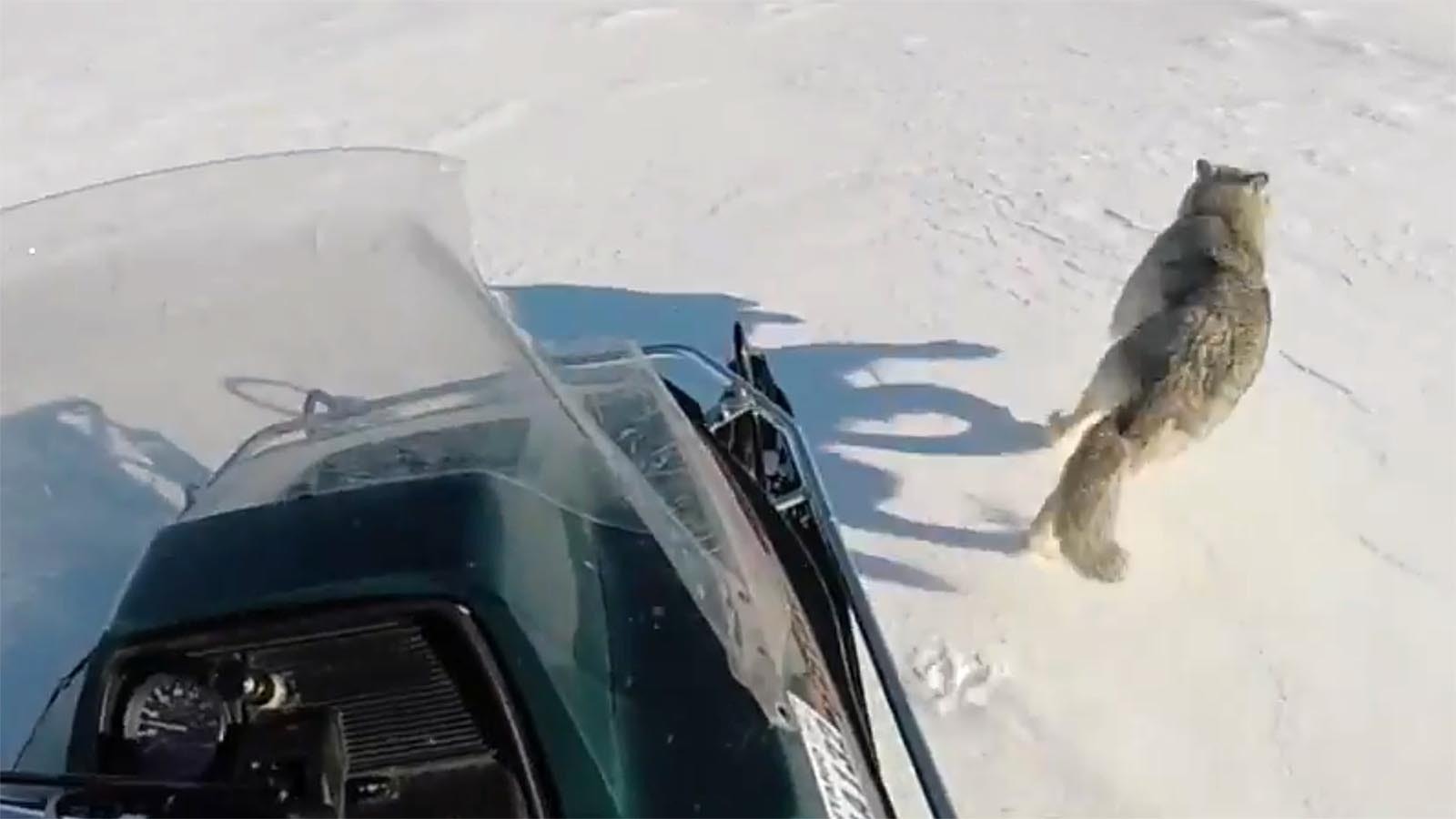Yellowstone National Park has long been considered a bucket list destination for many international visitors, particularly Chinese, European and Canadian tourists.
They might soon be paying more to visit the park with Interior Secretary Doug Burgum proposing an additional surcharge for foreign visitors to the nation’s parks.
The exact amount of the fee isn’t stated in Burgum’s plan, though it estimates the fee would generate around $90 million. That money would be put toward deferred maintenance. In comparison, a 2023 estimate from the nonprofit conservation think tank, Property and Environment Research Center, which has advocated for such a fee the past five or so years, estimated a $25 surcharge on foreign visitors would raise roughly $330 million.
To some Wyomingites whose businesses depend on tourism, the immediate, knee-jerk reaction to the proposed fee was no way, Jose.
Count Sen. Mike Gierau among them. The Teton County Democrat owns a restaurant in Jackson, where he says international tourists are some of his biggest spenders.
“I guess the only question that comes to my mind is, ‘Haven’t we done enough to foreigners already in this administration? Do we want to hit them again?’” he told Cowboy State Daily. “I have a lot of friends who are Canadians, and I can tell you their distaste for the attitude of the administration toward them is already palpable, and it seems to be spreading around the world.”
As someone who travels himself, Gierau added that he hates it when he gets charged more to visit an attraction just because he’s an American.
“I’ve owned a restaurant for 45 years in Jackson, and I can tell you honestly, I don’t even give locals a discount,” he said. “I give a good price to everybody who crosses my path, not more or less to any one person or any other.”
Gierau said one of the things he enjoys most about his line of work is meeting foreign tourists who are coming to America to learn more about America and its ideals. He sees low National Park fees as a great selling point for the American way of life.
“It’s one of the things that really sells America to the world,” he said. “So why in the world would you want to do something to dampen that by charging more? I just don’t get it. I think for a guy who touts himself as a businessperson, I think that’s especially bad for business.”

Wyoming Questions Focused On Other Things
Burgum appeared Wednesday before the Senate Committee on Energy and Natural Resources to defend his plan. He was grilled by Democrats on the cuts to the National Park Service and pressed for details on which lands Burgum intends to transfer. Republicans, meanwhile, applauded his leadership of the department and expressed support for his cuts.
Sen. John Barrasso, R-Wyoming, did not have a lot to say about any of the National Parks’ cuts. Wyoming’s senior senator instead used his time to talk about reversing the Rock Springs Management Plan, as well as a midnight-hour proposal from the Biden administration that sought to designate more than 600,000 acres as critical environment for sage grouse.
Burgum told Barrasso that the Department of the Interior is taking a hard look at both items and wants to get back to “following the law.”
“They were creating new concepts out of whole cloth that was really meant to restrict all forms of land use, as opposed to following the multiuse mandate they were given,” Burgum said. ‘So those are under review, and we hope to get back to following the law and making sure that the citizens of Wyoming and those private landowners who are living in those areas have … the same opportunities to thrive that others do, without the heavy hand of government.”
Burgum also told Barrasso that the Fish and Wildlife office in Lander, Wyoming, is an important office.
“We’re going to make sure that it’s staffed and able to execute against their important duties,” Burgum said. “And do that from the Lander office, as opposed to working remotely from someplace else.”
It’s About Time
While the entire idea of such a fee rubs Gierau the wrong way, former assistant secretary of the Interior Rob Wallace sees it a little differently.
“If you look around the world, almost every country that has a national park program charges more for international visitors than locals,” he told Cowboy State Daily. “So, it fits in with what the rest of the world has already been doing for decades.”
That dynamic is also seen across America, Wallace added. Many state park programs charge out-of-state visitors more for visiting their parks than they do their own residents.
France, Germany, Greece, India, Egypt, Japan, Italy, Mexico — these are just some of the countries in the world that do charge foreign tourists more to visit their country, according to a quick Google search.
In some cases, like Bhutan, a small country located on the southern slopes of the Himalayas, the extra fees go toward preserving the beauty that attracts an onslaught of tourists, as well as native culture and way of life.
Others, like Barcelona in northeastern Spain, see extra fees as a means of funding development and infrastructure projects that keep both their communities and the tourism that supports them vibrant.
Some countries are even doubling down on existing tourism fees. New Zealand, for example, tripled its foreign visitor taxes in 2024.
“This idea is nothing new and perhaps should have been implemented a long time ago,” Wallace said.
That way, foreign guests are helping support the resources they affect when they visit, just as Americans do with the taxes they pay.
Watch For Gaming The System
That kind of rationale also made sense to retired Wyoming park ranger Greg Jackson.
“American taxpayers have been paying their bit to fund the park over the years,” he told Cowboy State Daily.
Jackson also doubted whether such a fee would really deter foreign tourists from visiting.
“I mean, if I were to go to Paris and see the Louvre, I don’t know if they raised the price of admission from 50 to 75 euros whether that’s going to deter me after taking a long trip that’s costing me thousands of dollars,” he said. “So maybe it will work.”
However, Jackson also sees lots of ways that foreign visitors might evade such a tax, given how park fees are typically handled.
“The way those charges usually work is by the car, not the number of people inside it,” he said. “So, if there’s a senior citizen in the car, then they can all get a discount. Or if there’s someone in the car who has a disability, then everyone gets in free, because they have the access pass to do that.”
Jackson wondered if a foreign tourist shows up in an American rental car how the gatekeepers would even know that the visitor isn’t an American.
Another common tactic Jackson has seen is where people who want to skip fees altogether will enter a park before the entrance station opens for the day.
“There’s a variety of ways of gaming the system,” he said. “And the more expensive it is to get in, the more cumbersome it is, the more it incites gaming the system. Basically, the only people who end up paying (fees) are the honest ones.”
The other thing Jackson has seen happen is where money in one door ends up being money that doesn’t come in another, resulting sometimes, in lower revenue at the end of it all.
“The lottery was going to save the schools here,” Jackson said. “You know, the schools will be gold-plated because of all the lottery money they’ll be getting.”
But what actually happened, Jackson said, is money from the lottery ended up reducing funding from other sources.

Burgum Defends Plans
Burgum’s national park fee proposal is part of a broader budget proposal the Interior Secretary has put forward that would cut funding for national parks by roughly $1 billion, as well as transfer “excess” federal lands to state management.
“Many parks and other federal lands receive only a limited number of local visitors and do not constitute a primary Federal responsibility,” Burgum’s plan states. “Transferring those lands to willing states and tribes supports local communities and their economies.”
The budget also proposes repurposing some of the Land and Water Conservation Fund, created by the 2020 Great American Outdoors Act, for deferred maintenance at federally managed parks.
“Instead of adding more land and infrastructure to the Federal Government’s already bloated real property portfolio,” Burgum’s budget proposal states, “the budget proposes to repurpose $276.1 million for a new deferred maintenance program within LWCF.”
That program could be used by Bureau of Land Management, National Park Service, and U.S. Fish and Wildlife Services to address maintenance needs. Additional funding would be provided separately for the U.S. Department of Agriculture.
LWCF would still fund $375.7 million for grant programs, including grants to states that support locally led outdoor recreation.
The Department of the Interior’s real property portfolio includes 43,000 buildings, 90,000 structures across 2,400 locations, according to figures in Burgum’s budget proposal.
“Interior is working to review and prioritize infrastructure investments to optimize mission delivery, while divesting excess assets and reducing our real property footprint,” the budget proposal states. “Interior is working closely with the General Services Administration and the Federal Reserve Property council to identify opportunities to streamline leases and ensure our employees are strategically placed to deliver mission-critical services.”
Burgum’s $14.4 billion budget proposal also includes a new centralized U.S. Wildland Fire Service, which will incorporate wild land fire activities of the US Department of Agriculture’s U.S. Forest Service.
That move adds roughly $2.5 billion to Burgum’s budget proposal, which would otherwise be $11.9 billion under its current authority.
Renée Jean can be reached at renee@cowboystatedaily.com.





